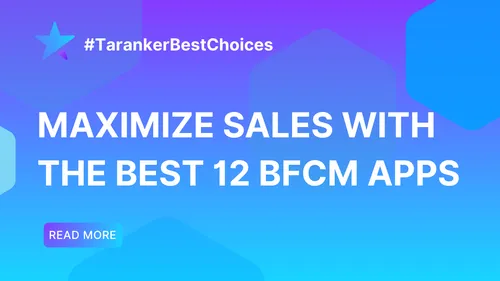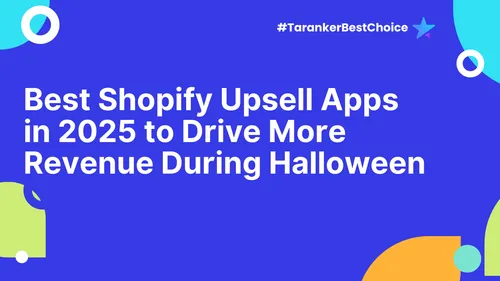For e-commerce merchants operating on Shopify, mobile optimization is no longer optional—it’s a critical factor that directly impacts traffic, conversions, and customer satisfaction. With over 70% of Shopify traffic now coming from mobile devices, ensuring that your store provides a seamless experience on smartphones and tablets is essential for long-term success. In this detailed guide, we’ll explore why mobile optimization matters for Shopify stores, how it impacts SEO, user experience, and sales, and practical steps you can take to make your Shopify store mobile-friendly.
1. Why Mobile Optimization Matters in E-commerce

Shoppers Prefer Mobile Over Desktop
Consumer behavior has shifted dramatically over the past decade. More people are browsing, comparing, and purchasing products directly from their phones. Mobile shopping isn’t just about convenience—it’s now the default for millions of customers globally.
On Shopify specifically, studies show that more than two-thirds of all traffic originates from mobile devices. This means that if your Shopify store isn’t optimized for mobile, you risk alienating a majority of potential customers.
Mobile Optimization and SEO Go Hand in Hand
Google’s algorithm now follows mobile-first indexing, meaning Google evaluates and ranks your site based on its mobile version—not the desktop version. If your Shopify store looks and performs poorly on mobile devices, your organic search rankings will suffer, making it harder for customers to find your store through Google search.
2. The Business Impact of Poor Mobile Optimization

Higher Bounce Rates
When customers land on your site and encounter:
-
Text that’s too small to read
-
Images that don’t fit the screen
-
Navigation that’s hard to use
…they leave almost immediately. High bounce rates send a negative signal to Google, further hurting your SEO performance.
Lost Sales Opportunities
A cumbersome mobile experience also results in:
-
Abandoned carts
-
Lower conversion rates
-
Decreased customer trust
In contrast, a well-optimized mobile Shopify store instills confidence and makes the checkout process frictionless, helping you capture more sales.
3. Core Elements of Mobile Optimization for Shopify Stores

1. Responsive Design
Shopify merchants should always choose a responsive theme. This means the design automatically adapts to different screen sizes—whether it’s a small phone or a large tablet.
Shopify’s Online Store 2.0 themes are built with responsiveness in mind, but you should still test every page to ensure product grids, buttons, and images scale correctly.
2. Fast Loading Speeds
On mobile, every second counts. Research shows that if a page takes more than 3 seconds to load, the majority of visitors abandon it.
To improve mobile load speeds:
✔️ Compress product images using tools like TinyPNG
✔️ Minimize heavy apps and unnecessary code
✔️ Use lazy loading to defer offscreen images
✔️ Choose a lightweight Shopify theme
3. Mobile-Friendly Navigation
Mobile users have limited screen space, so your navigation must be intuitive and minimal.
✅ Use a hamburger menu (the three-line icon) for your main navigation.
✅ Keep product categories organized and logical.
✅ Include a sticky search bar so users can find products quickly.
✅ Ensure filters and sorting are accessible and easy to use on smaller screens.
4. Optimized Product Pages
On mobile, customers want quick access to key product information.
✔️ Display product images in a swipeable carousel format.
✔️ Use bullet points for key product details.
✔️ Place "Add to Cart" buttons above the fold (visible without scrolling).
✔️ Use accordion-style tabs to keep descriptions, reviews, and FAQs tidy.
5. Frictionless Checkout
Cart abandonment is notoriously high on mobile devices. To reduce friction:
✔️ Offer express checkout options (Shop Pay, Apple Pay, Google Pay).
✔️ Minimize the number of form fields in the checkout process.
✔️ Display trust badges and secure payment icons prominently.
✔️ Enable guest checkout to speed up the process for first-time buyers.
6. Mobile-Specific Promotions
Leverage mobile-specific features to boost conversions:
✔️ Use exit-intent popups tailored for mobile screens.
✔️ Add sticky banners promoting limited-time deals.
✔️ Offer SMS-exclusive discounts to encourage mobile engagement.
4. Mobile Optimization and Shopify Apps

Recommended Apps to Enhance Mobile Experience
📱 Tapcart – Convert your Shopify store into a branded mobile app.
🚀 PageSpeed Booster – Improve mobile loading times.
📸 TinyIMG – Automatically compress images for faster performance.
📊 Lucky Orange – Track mobile visitor behavior through heatmaps and session recordings.
Be Cautious with Too Many Apps
While apps can enhance your store, installing too many apps can slow down page speed—especially on mobile devices. Regularly audit your apps and remove those that aren’t essential.
5. Testing and Monitoring Mobile Performance

Use Google’s Mobile-Friendly Test
Google offers a free Mobile-Friendly Test tool that evaluates how well your site works on mobile devices and highlights specific problems that need fixing.
Regular Mobile Audits
Once your store is live, mobile optimization isn’t a one-time task. Consumer behavior, device types, and Shopify updates evolve constantly. Set up quarterly audits to check:
✔️ Page load speeds
✔️ Navigation ease-of-use
✔️ Checkout experience
✔️ Mobile SEO performance
6. The Competitive Advantage of Mobile Optimization

Stand Out in Your Niche
Despite the importance of mobile optimization, many Shopify merchants still overlook it. By making your store exceptionally mobile-friendly, you can differentiate yourself in crowded niches like fashion, beauty, or health.
Build Brand Trust
When customers enjoy smooth, intuitive experiences on your mobile store, it boosts brand perception. Even if they don’t purchase immediately, they’re more likely to return in the future.
Mobile-First Marketing
Once optimized, you can confidently run mobile-first marketing campaigns across Instagram, TikTok, and Google Shopping. Knowing that your landing pages convert well on mobile allows you to invest more in these channels with higher ROI.
Final Thoughts
For Shopify merchants, mobile optimization isn’t just a technical enhancement—it’s a core part of building a profitable, customer-friendly store. By focusing on responsive design, faster speeds, intuitive navigation, and mobile-friendly checkout, you create a shopping experience that delights customers and drives conversions.
In 2025 and beyond, mobile-first stores will dominate e-commerce. The question isn’t whether to optimize for mobile—it’s how quickly you can make it a priority.
Frequently Asked Questions (FAQs)
1. Does Shopify automatically make my store mobile-friendly?
Yes, most Shopify themes are responsive by default, but you still need to optimize images, navigation, and content layout for optimal performance.
2. How can I test if my store is mobile-friendly?
Use Google’s Mobile-Friendly Test, but also manually check your store on multiple devices (iPhones, Androids, tablets).
3. Do mobile page speeds really affect SEO?
Absolutely. Google rewards fast-loading mobile sites with higher rankings—especially for competitive e-commerce terms.
4. Should I invest in a dedicated mobile app for my Shopify store?
If mobile accounts for over 70% of your traffic (which is common), an app could significantly improve repeat purchases and customer loyalty.













